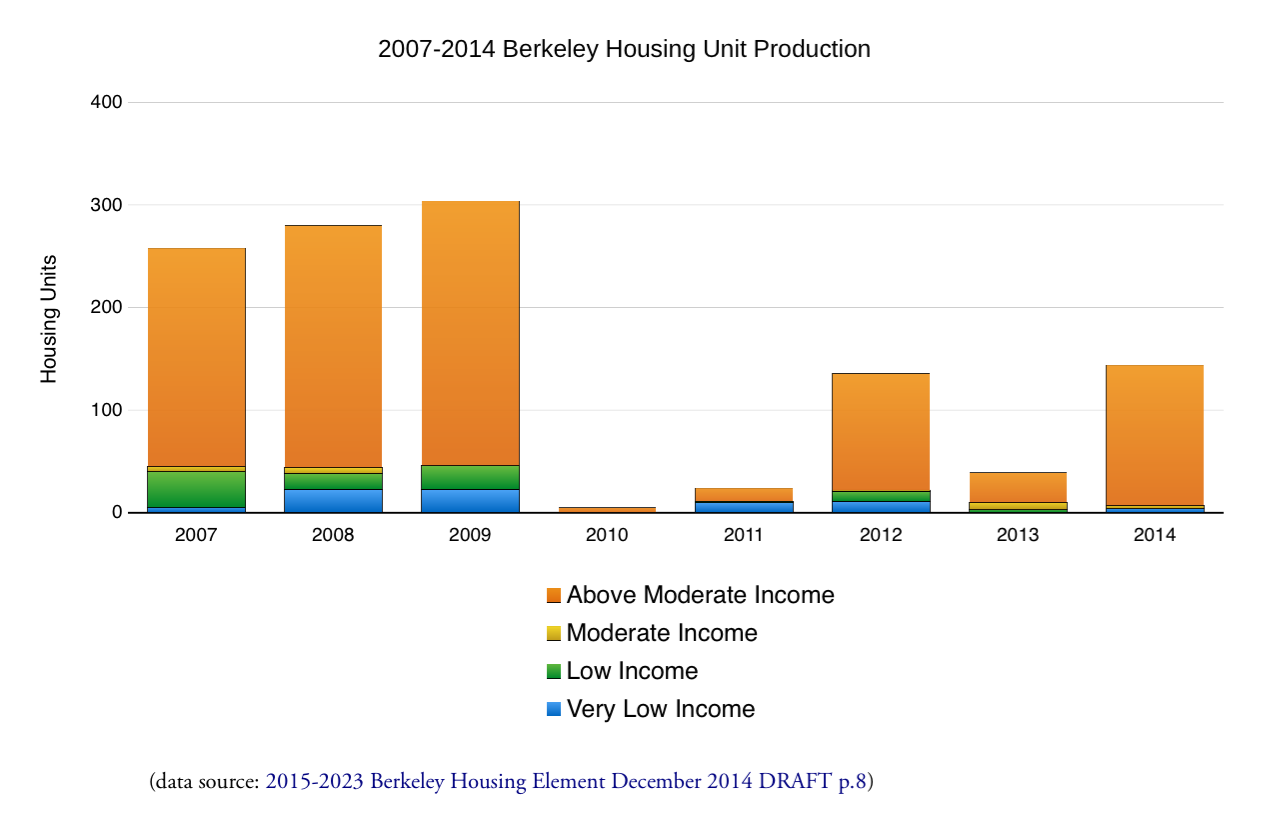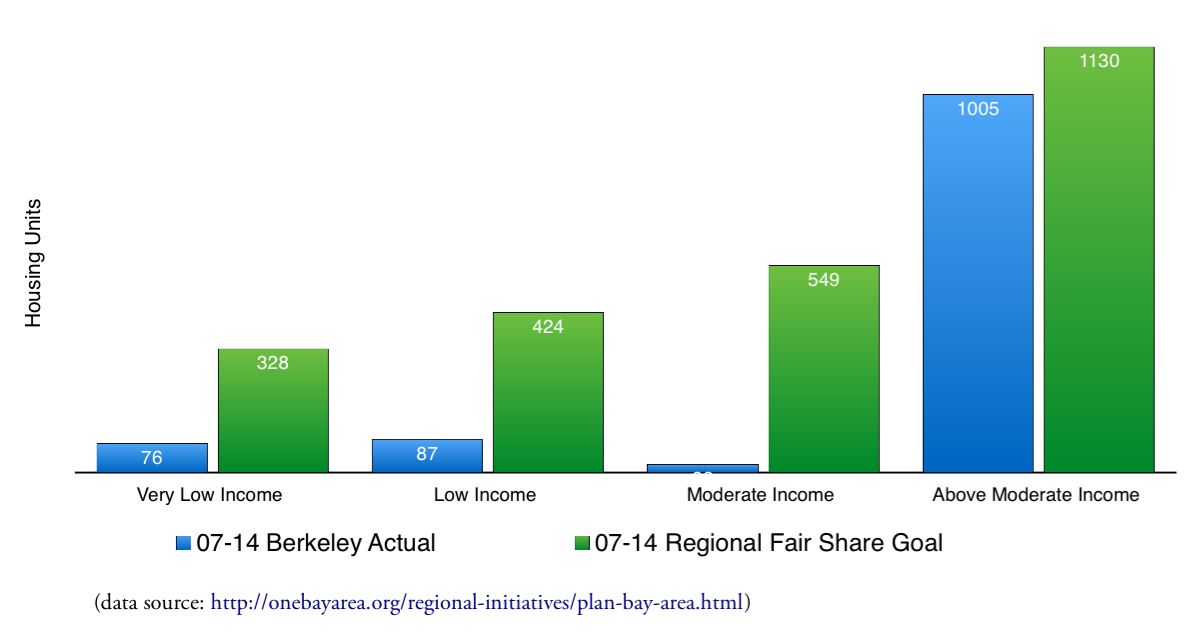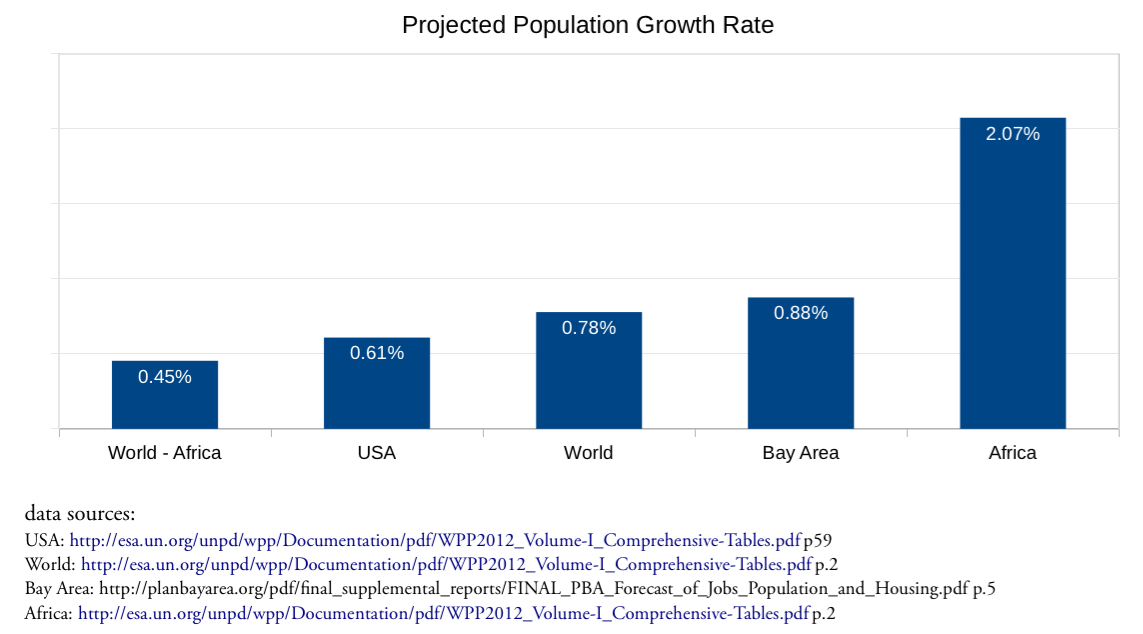If you’re free on Thursday night, it might be a good opportunity to get a preview of what’s shaping up to be a battle for the soul of Berkeley. Yes, yes, I know that sounds a bit over the top, but the plans the money men are making for us are equally over the top and then some.
To get the full flavor of what’s happening, you should go on Thursday at 6 to the Campanile at what’s now called U.C. Berkeley (formerly known as Cal). It’s that bell tower (formally the Sather Tower) situated at a high point right in the middle of campus. If you look west from the Campanile (and there should be a sunset) you can see all the way out through the Golden Gate.
Breathtaking, isn’t it?
And catch that view while you still can, because the big bucks barons have a few plans to change it that they’d like to share with you.
Did you hear about San Francisco’s successful “No Wall on the Waterfront” campaign last fall? It was an initiative which prevented (at least for now) the construction of—yes, a wall—of highrises which would have blocked San Francisco’s fabled view of the Bay. Now it’s Berkeley’s Bay view that’s threatened, specifically the view of the Golden Gate from the campus which generations of students and visitors from all over the world have enjoyed since the Campanile was built in 1914.
Since last November the city of Berkeley’s Landmarks Preservation Commission has been studying how it might be possible to preserve that lovely view for generations to come. Steve Finacom and Carrie Olson, both former LPC commissioners, have put together a comprehensive set of documents explaining why the view’s important and why it must be included in Campanile Way’s designation as a landmark in order to save it.
The commission opened a public hearing to discuss these recommendations at its February meeting, which will be continued on Thursday. Many Berkeley citizens spoke in March in support of saving the view. But also speaking, as previously recounted in this space, were Downtown Berkeley Association Chief Executive Officer John Caner, and his posse, including representatives of a small San Francisco organization devoted to building as much as possible of everything everywhere, under the claim that this will provide for regional housing needs. The group is called San Francisco Bay Area Renter’s Federation, fondly known to both fans and foes as SFBARF. BARF indeed.
BARFers, as well as I can understand their message, seem to want Berkeley to build them some stuff here, and to hell with them stinking views. They apparently believe that building some towers filled with luxury apartments will through some magical trickle-down effect provide them with cheap rent wherever they choose to live in the Bay Area.
Four or five of them showed up on Saturday at the Berkeley Farmers’ Market handing out flyers which purported to explain their position. One item in their printed wish list especially caught my eye:
“Personal freedom: to live in the neighborhood or town of your choosing and not just the only place you can afford.”
Well, yes, sure, who among us wouldn’t want that? Who wouldn’t like to live in all those nice places they can’t actually afford?
The BARFies seem to have chosen Berkeley as the place they’d most like to live—lucky us.
Some of us who are here now, if BARF gets its way and we can all live where we can’t afford to live, might then choose to move to, oh, say, Pacific Heights? Or Piedmont? Or maybe we’d like to join Vinod Khosla at the beach? But why stop there? How about the French Riviera? Opportunities are unlimited when “personal freedom” regardless of cost is the order of the day.
The BARF flyer talks a lot about “quality of life”. But what about those who would simply like to be able to afford to live somewhere? Downtown towers won’t do much for them.
Here’s a drawing from the flyer:

Well, again, yes, sure, that’s nice, I guess. But there’s a bit more to life than that.
Nature, for example, and views thereof. But that’s so Earth Day, so old school.
You might wonder how preserving the view of the Golden Gate from the Campanile would hamper the BARFites’ personal freedom?
They seem to need B-I-I-G buildings in downtown Berkeley to provide new lifestyle opportunities when their ex throws them out. Even if they can’t afford the cost of living in luxury.
Caner and his BARFy acolytes at the last LPC meeting argued against including the view of the Golden Gate as part of the landmark designation because it might inhibit plans now in the works to build several 18 story deluxe buildings in downtown Berkeley.
Here’s another BARFnik cartoon on this topic, circulated on the Internet, picturing their claim that adding tall buildings would just improve the view from the Campanile:

What’s shown in the drawing would be bad enough, but here’s what Steve Finacom told me about how it depicts plans now before the Zoning Adjustment Board for 2211 Harold Way, modestly titled “The Residences at Berkeley Plaza” (and no, there is no Berkeley Plaza):
“Their cute little ‘frame’ of tall downtown buildings around the Golden Gate is set back much, much, further on either side than the actual development is and would be. The drawing is a lie. The buildings would rise right in front of Alcatraz and what little view is left of the Bay water, and up to the base of the bridge and, on other sites, block the bridge itself. This is not a matter of ‘framing’ but ‘blocking’.”
(Steve added that the cartoonist also misinterprets the poem by Bishop George Berkeley that inspired the name for our city: “Bishop Berkeley says in the poem itself that ‘empire’ means an empire of learning and the arts. That phrase is almost never quoted, while ‘westward the course of empire’is incessantly used. And when he wrote his poem in the early 18th century, the ‘British Empire’ did not exist.”)
This project now in the works, which immediately threatens the view of the Golden Gate from the Campanile, would be an 18-story tower. It would replace the building which now houses the Shattuck Cinema, the Habitot children’s center and several local businesses. As it’s currently proposed, it would block the view on the south side of the Campanile’s view corridor.
The putative developer is a Los Angeles financier, Joseph Penner, whose Hill Street Realty corporation acquired the building at a bargain price in an estate sale. It appears, checking the Internet, that he’s never actually built any kind of development.
In most of these speculative construction projects the goal is to maximize the per-square-foot return on owned properties, often not by selling or renting units but simply by finding someone else who will do the annoying work of completing the building. (See, e.g. the history of the Berkeley building formerly known as “The Arpeggio”).
If the current proposal gets entitled (gets all the permits and variances it needs) Hill Street could sell the whole unbuilt project to someone else for a huge profit on the initial investment without any enforced commitment to follow through on earlier promises of providing community benefits for Berkeley made to secure the entitlements.
Berkeley Planning Director Eric Angstad said as much at a talk he gave at the Berkeley Chamber of Commerce. “It’s political”, he said with a shrug when I asked about enforcing conditions on use permits.
So, what’s the plan for the Campanile?
Staffing the SFBARF table at the Saturday market were the fine fellows pictured below. Remember them, and watch for them on Thursday.

On the left you’ll see a longtime Berkeley consultant who often fronts for developers, Tim Frank. Next to him is Jon Schwark, who told people at the table that he’s lived in a rent-controlled San Francisco apartment for twenty years after moving here from Oklahoma Kansas. Next to him there’s another Midwestern transplant, Ian Monroe from Missouri, in Berkeley for a bit over 2 years, a techie who commutes to San Francisco for work. The guy on the far right, the one wearing the 60s’ style prairie dress and the straw bonnet, is Alfred, the cartoonist.
The small person crouched under the table is, probably, one Libby Lee-Egan, a child, though she’s hard to identify in this photo.
Missing here, but reported to have been present, is SFBARF founder Sonja Trauss. She’s the subject of a remarkable article which appeared in today’s San Francisco Business Times:
Pro-density renters group grows, snags tech giant CEO donation
The story reveals that Yelp CEO Jeremy Stoppelman has given Trauss $10,000 for her personal use.
“I wanted to help her personally with a financial gift since she recently gave up her job as an educator to devote herself full time to activism,” he told the SFBT. Activism seems to pay better than it used to in the olden days, doesn’t it?
Supporters of the Golden Gate view have planned a procession on Thursday from the campus to the North Berkeley Senior Center, where the LPC meeting starts at 7. Now BARFers have said online that they plan to meet at the Campanile at 6 too. Presumably they’ll be there to heckle. It should be amusing all around.
But don’t think this is all just fun and games. It’s already gotten rough. LPC Commissioner Rose Marie Pietras was summarily axed (via a message on her answering machine—how tacky) by Mayor Tom Bates because she revealed her opinion that the view should indeed be landmarked if accepted standard planning principles are to be followed. She should know, since she worked as a planner in Contra Costa County for 30 years. I guess that’s why Bates had to get rid of her.
Her replacement, appointed by the mayor, is a young woman who both works for a big Oakland architectural firm and lectures in U.C.’s planning school. It’s hard to see how she can vote on this one, which seems to present a conflict of interest for someone with those jobs, but that never bothers the Bates apparatus. In his twelve years in office he’s gleefully brought Sacramento-style hardball politics to Berkeley. It sure is ugly, isn’t it?
But if you’re one of those people who cares more about preserving our common heritage than about ensuring developers’ profits, show up on Thursday night. Even if you think what Berkeley really needs is a few luxury skyscrapers, you might favor keeping the view. Either way, you can join the march from the Campanile at 6, or you can just appear at the North Berkeley Senior Center (at the corner of Hearst and Milvia) at 7 to tell the LPC what you think.








